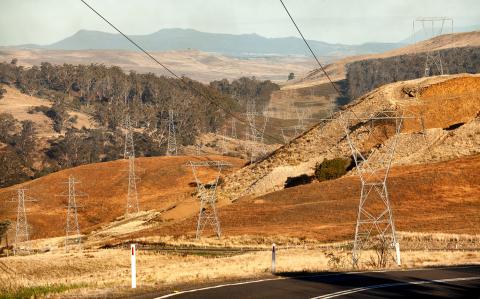IEEFA Arizona: 10 follow-up questions for the Navajo Transitional Energy Company
As the Navajo Transitional Energy Company presses forward with its proposition to acquire the failing Navajo Generating Station (NGS) and its supplier, the Peabody Energy-owned Kayenta Mine, concerns persist about the substance of the proposal and the liabilities that would come with it.
While NTEC’s general counsel, Bernard Masters, revealed some fresh details yesterday before a state legislative committee in Phoenix, he also raised as many questions as he answered (the full video of the hearing is posted here at 01/30/2019 House Federal Relations Video).
Little is known publicly about NTEC’s strategy, its expertise, its personnel, its relationships with current NGS owners or with Peabody, not to mention its full intentions. Questions abound as to what exactly NTEC is up to, all stemming from worries that its move to acquire NGS and the mine is a largely a blind course of action resembling a ship moving steadily toward an iceberg.
Important questions remain. Here are 10 from a finance and economics point of view:
1) Why has NTEC not published its business plan?
Electricity-generation markets locally, regionally and nationally are modernizing quickly, forcing changes among utility companies both large and small and requiring responsible business planning to remain viable and competitive.
2) Do any members, contractors, employees—past or present—of the Navajo Nation government have a personal financial stake in the company?
NTEC has shared next to nothing of substance with the Navajo people. This absence of transparency has created suspicion and skepticism, putting public trust at risk.
3) Who manages NTEC day to day, and who is signing off on its business strategy? Why have the names and biographies of executives recently been removed from the company’s website?
Transparency is a crucial component of any effectively managed electricity-generation operation. Knowing who is in charge and whether that person is up to the task is key to building public confidence.
4) Mr. Masters said in his testimony (01/30/2019 House Federal Relations Video) that parties to the deal want Navajo Nation ultimately to be accountable for all NGS and Kayenta liabilities—liabilities that presumably include all the many reclamation and remediation costs that come with the plant and mine. Which parties are placing Navajo Nation on the hook and what is the likely dollar amount of that eventual responsibility?
Here is an excerpt from Mr. Masters’ testimony: “The participants are currently insisting on a very direct, very explicit guarantee from the Nation of any and all of NTEC’s obligations under a purchase agreement … a very explicit indemnification of NTEC’s obligations.”
5) Is the indemnity requirement a deal-killer?
Navajo opposition runs deep against Navajo Nation taking on NGS and Kayenta liabilities.
6) How will NTEC pay for NGS, how much will it pay, and how will it fund probable operating losses?
Our research has shown that NGS is a money-losing operation and that if it is kept open, its losses will only increase.
7) Who will buy power from the plant and at what prices? Has NTEC actually identified any potential buyers for the power from NGS?
Understanding the market and making realistic demand estimates is essential for the project’s viability. Such a review would be elementary to any new owner’s due diligence.
8) Mr. Masters said in his testimony that NTEC will close one of the three units at NGS. Has NTEC calculated how many employees it will need to lay off at both the plant and the mine, and will there be a risk of reductions in wages and/or benefits?
Realistically, whoever owns the plant will need to severely slash production costs if it is to remain open.
9) The deadline for agreeing to a deal is said to be late March, with financial closing in September. Do these deadlines assume that Navajo Nation will agree to take on all liabilities from current NGS owners and Peabody Coal?
Mr. Masters in his testimony said NTEC is not in favor of leaving Navajo Nation with all the liabilities from the current owners, but he did not rule out the possibility.
10) What does the ‘Transitional’ in Navajo Transitional Energy Company’s name signify?
A responsible transition in Navajo energy policy would be driven by the market’s growing interest in cleaner and cheaper forms of power generation. Transition, by definition, is the process or period of changing from one state or condition to another. Adhering to an outdated business model is not transitional.
These 10 questions only represent the tip of the iceberg.
If the Navajo Nation is held liable for all the plant and/or the mine’s financial obligations, economic catastrophe would surely result, creating untold pain for the workers at NGS, the miners at Kayenta, and other members of the Nation.
David Schlissel is director of resource planning analysis at IEEFA. Karl Cates is an IEEFA research editor.
RELATED POSTS:
IEEFA Report: No profitable future for Navajo Generating Station
IEEFA update: The hurdles to an economically viable Navajo Generating Station remain
IEEFA U.S: Tribal investment in struggling coal-fired Four Corners plant will lose millions















